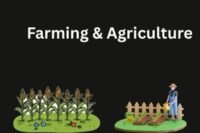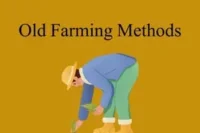What is Crop Rotation Farming. A Time-Tested Secret to Thriving, Agriculture
Published: 24 Apr 2025
Why would a farmer deliberately plant something that isn’t the most profitable crop? Why rotate between beans, corn, and cover crops when sticking with one seems easier? At first glance, crop rotation seems like an outdated, unnecessarily complicated practice — especially in an age of high-tech machinery and synthetic fertilizers. But look closer, and this age-old method reveals itself as a quiet revolution in soil health, pest control, and long-term productivity. Crop rotation isn’t just tradition — it’s one of sustainable agriculture’s best-kept secrets.
Welcome to the world of crop rotation farming—the age-old secret to sustainable success.
So, guys, without wasting time, let’s jump into the article to learn the pros and cons of the internet.
What Is Crop Rotation Farming?
Crop rotation farming is the agricultural practice of growing different types of crops sequentially on the same plot of land to improve soil health, reduce pests and diseases, and increase farm productivity.

Instead of planting the same crop season after season (which drains the soil of specific nutrients), farmers rotate crops to restore balance and encourage natural fertility.
For example:
- Year 1: Corn (heavy nitrogen user)
- Year 2: Beans (nitrogen fixer)
- Year 3: Wheat (moderate nutrient needs)
- Year 4: Clover (cover crop and soil restorer)
This smart strategy isn’t just sustainable—it’s transformational.
The Deep Benefits of Crop Rotation Farming
At first, it might seem like just switching crops around — simple, even old-fashioned. But beneath the surface, crop rotation is working wonders: rebuilding soil, breaking pest cycles, and quietly powering sustainable farms.
1. Restores Soil Fertility Naturally
The soil is alive—a breathing, dynamic ecosystem. Repeating the same crop depletes specific nutrients, but rotating crops:
- Replenishes vital elements
- Balances pH levels
- Boosts organic matter
This means healthier soil without relying on synthetic fertilizers.
2. Reduces Pests and Diseases
Pests love consistency. When the same crop is grown repeatedly, they settle in and thrive. Crop rotation:
- Breaks pest cycles
- Reduces the need for pesticides
- Prevents soil-borne diseases
It’s nature’s pest control system—no chemicals required.
3. Improves Water Retention and Reduces Erosion
Different root systems interact uniquely with soil. Rotating deep- and shallow-rooted plants:
- Enhances soil structure
- Reduces runoff
- Improves moisture retention
This helps protect against droughts and floods—a crucial win in a changing climate.
4. Boosts Yields and Long-Term Profitability
Healthier soil = healthier plants = higher yields. Over time, this means:
- Better crop quality
- Increased market value
- More resilience against market and environmental shocks
Sustainability isn’t just about the planet—it’s about profitability too.
The Science Behind Crop Rotation
Crop rotation works because different plants interact with the soil in unique ways:
- Legumes (like beans and peas) fix nitrogen into the soil
- Grains (like wheat and barley) use nitrogen but help with structure
- Root vegetables dig deeper and improve aeration
By alternating crops, farmers create a natural nutrient cycle—no lab coat required.
Real Stories, Real Results
Meet Maria, a third-generation farmer in Iowa. After years of monoculture corn, her yields plummeted. Pests were relentless. Costs were up.
Then she tried crop rotation.
Three years later, her soil tests are better than ever. She uses 40% less fertilizer, has reduced pesticide use to near-zero, and her profit margins are up. “It’s not just farming,” she says. “It’s healing the land.”
How to Start Crop Rotation Farming
Ready to give your soil the care it deserves? Here’s a simple guide:

Step 1: Understand Your Soil and Crops
Know what nutrients your soil has and which crops complement each other.
Step 2: Create a Rotation Plan
Design a 3–5-year plan mixing:
- Heavy feeders (corn, cabbage)
- Light feeders (carrots, onions)
- Nitrogen fixers (legumes)
- Soil restorers (clover, rye)
Step 3: Monitor, Adapt, Thrive
Keep records. Adjust yearly based on outcomes. Let the soil guide you.
Why Crop Rotation Matters More Than Ever
In an era of climate change, soil degradation, and skyrocketing input costs, crop rotation is more than a method—it’s a movement. It honors the wisdom of the past while protecting the promise of the future.
This isn’t just about plants and soil.
It’s about feeding families. Supporting communities. Restoring balance.
Final Thoughts: The Soil Remembers
Every seed planted with care, every crop rotated with purpose, tells the soil: You matter. In return, the soil gives back—abundantly.
Crop rotation farming isn’t just good science—it’s an act of love. A bond between farmer and earth that sustains generations. Let’s not just grow food—let’s grow with purpose. Would you like this turned in

- Be Respectful
- Stay Relevant
- Stay Positive
- True Feedback
- Encourage Discussion
- Avoid Spamming
- No Fake News
- Don't Copy-Paste
- No Personal Attacks

- Be Respectful
- Stay Relevant
- Stay Positive
- True Feedback
- Encourage Discussion
- Avoid Spamming
- No Fake News
- Don't Copy-Paste
- No Personal Attacks





